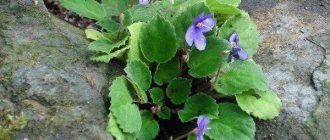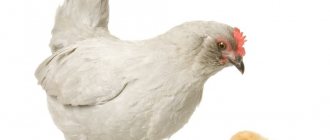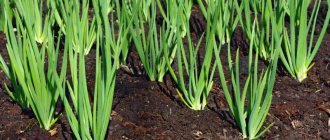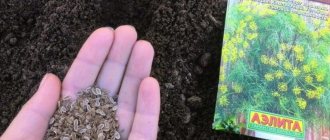There are several different ways of winter storage of montbretia, and you need to choose the most suitable one yourself based on your own experience. Or you may have to try several methods to find the best option for you. As they say, everything is learned by comparison!
So, method one. After digging, the above-ground part of the montbretia is cut off, leaving stumps 2-3 cm high. The nests are not divided, washed, or shaken off the ground. Dry, place in a container and completely cover with dry sand. Then put in a cool place and store until spring. In March, they are taken out, cleaned of soil and dead tissue and placed in a plastic bag, which is tied and held in the light. In early May, the sprouted plant bulbs are planted in the ground.
Method two. In a dry, elevated place, prepare a groove 30-35 cm deep. Lay plastic film on the bottom and pour wet fishing line. Undivided nests of Montbrecia are laid on it in 2-3 layers. The gaps are carefully filled with sand. The film is wrapped to prevent water from leaking inside. The top is covered with earth and cut stems of perennials.
And finally, the third way. In central Russia, securely covered bulbs successfully overwinter in the ground. With the onset of stable negative temperatures (early November), the plantings are mulched with a layer of peat or leaves (15-20 cm), and spruce branches or cut stems of perennial plants are placed on top of them, which press the leaf, prevent it from flying away from the wind and retain the snow.
Crocosmia, montbretia, tritonia are all names of the same flower, which gardeners also call Japanese or Chinese gladiolus. An unpretentious bulbous perennial plant came to Europeans from Africa.
That flower, which usually pleases the eye in flower beds, was bred through selective breeding by the Frenchman Lemoine. Montbrezia got its name from the name of a French botanist, and crocosmia is translated as “the smell of saffron.”
Montbrecia is an elegant plant with iris-like leaves and spikelets of funnel-shaped stars - flowers of white, yellow, brown, orange or bright red. The arrows of Japanese gladiolus flower growers can be tall and erect, and can smoothly bend between the leaves. The height of the flower spike is from 60 to 150 cm.
Montbrecia has gained popularity among gardeners due to its long flowering period, which can last from July to September, until the very first frost. Flowers look beautiful in bouquets and remain fresh when cut for up to two weeks.
The bulb of the Japanese gladiolus is small, covered with brown shells. Crocosmia fruits are round capsules with many seeds. You can grow and propagate this flower in your garden by planting corms, plants and seeds.
Growing from seeds
It is easier to grow a plant from seeds if you use the seeding method. For this purpose, prepare containers with soil, which should include peat, sand, turf, and humus. Seeds should be soaked for a day before sowing. For disinfection, you can use a weak solution of potassium permanganate for soaking. After sowing, cover the container with film and place it in a warm, well-lit place.
Crown anemone (Anemone coronaria), Asian buttercup (Ranunculus asiaticus)
After digging, the thickened rhizomes of these plants are washed, treated in a fungicide solution and dried to the state of “crackers”. Store in any box or bag at room temperature. Before planting, soak for a day.
In nature, this beautiful plant grows in southern Africa. In Europe, Crocosmia has been cultivated since the 19th century. Today this flower is widely popular among gardeners as a perennial bulbous plant. Crocosmia is also called Montbretia or Japanese gladiolus. The plant looks great in open flower beds. Designers recommend planting Japanese gladiolus with daylily, rudbeckia, and salvia.
Crocosmia has dense greenery, over which erect or drooping flowers bloom. The name of this plant translates as “saffron scent”, which is exactly the smell emitted by dried Montbretia flowers. This plant will be a worthy decoration of any garden, and cut inflorescences can delight with their beauty for fourteen days.
Gladiolus crocosmia - planting and care in the garden
Time to board
The right time for planting seedlings in open ground comes when the minimum daily temperatures are no lower than 6 degrees above zero. For the middle zone, this is the end of April - May. The place of permanent residence of the Japanese gladiolus should be an area completely open to sunlight, otherwise the montbretia may not bloom. This plant loves soils in which there is no stagnation of moisture. Constantly wet soil threatens rotting and disease. It is better to prepare a bed for planting crocosmia in the fall. The soil is enriched with humus, lime, phosphate fertilizers and potassium chloride. Nitrogen fertilizers are added in the spring.
Each seedling is placed in a separate hole and watered well. In order for the seedlings to survive transplantation less painfully, you need to make a canopy over it from the sun's rays for 2-3 days.
Planted from seed seedlings, crocosmia does not produce inflorescences in the first year. With good care in a suitable place, flowers can bloom in the second year, usually only in the third.
Growing
Work on planting and caring for Montbretia in open ground is no different from caring for ordinary gladioli and comes down to weekly abundant watering and loosening the soil after watering, and weed removal as necessary.
If the flowerbed occupies a place on fertile soil, there is no need for additional fertilizing. Poor, infertile soils require additional application of organic fertilizers in solution every 10 days, and potassium fertilizers during bud opening.
Reproduction
Every year, many baby shoots grow around the mother bulb, which begin to flower independently the following year. The old corm does not die, but continues to grow further. Caring for Japanese gladiolus includes periodic division and transplantation of daughter bulbs. The bushes are dug up in the fall, and new planting is done in the spring, at the same time as planting seedlings from seeds. You can first plant the bulb in a pot, germinate it a little, and then transfer it to a flowerbed, carefully, along with a lump of earth.
It is advisable to plant different varieties of crocosmia away from each other to maintain purity of color. Those planted together cross-pollinate and lose their brightness.
Possible pests and methods of controlling them
Perennial Japanese gladiolus is a plant resistant to various types of diseases. However, excessively moist soil, as well as excessive drought and infections brought by insects, can cause some diseases.
- Fusarium. Signs: leaves dry out, flower stalks dry and curl, flower color fades. Control: treatment with fungicides.
- Gray rot. Signs: gray plaque affects the bulb, the plant dies. The reason is waterlogging.
- Jaundice. Signs: the tips of the leaves turn yellow, then the whole plant turns into straw and dies. The cause is a viral infection. Control: affected plants do not regenerate, healthy ones must be transplanted to another place, bulbs and seeds should be treated with potassium permanganate before sowing.
- The main pests of Montbrecia are spider mites, mole crickets and thrips. Control: spraying with chemicals, using traditional methods of control, traps for mole crickets.
Description of the flower
The delicate scent of Montbretia resembles the aroma of saffron, which is why this flower is called crocosmia (saffron scent). The aroma becomes most audible after the inflorescences are dried. The flowering period of the plant differs in its duration: from July to the end of September.
The color of Japanese gladiolus flowers (and this is also the name of the flowers) can be varied: from yellow to dark red. Planted in a group or separately, montbretia will decorate any garden flower bed. A combination of different varieties of crocosmia looks great in landscape design. Such flowers look great in combination with other plants and against the backdrop of a green lawn. They are also grown for cutting, and the dried inflorescences are used to create bouquets.
Crocosmia after flowering
Collecting seeds
Ripe crocosmia seeds are large and yellow-brown in color. After ripening, the seed pods are collected and stored in a dry place. It is best to propagate Chinese gladiolus, which is already growing in the garden, using the vegetative method. And if you really need seeds, it is better to purchase them in a store to avoid infection and cross-pollination.
Preparing for winter
Japanese gladiolus is a perennial; in regions that are not threatened by severe winters with freezing of the soil, crocosmia is not dug up. The bushes are pruned and mulched with compost, sawdust, and spruce branches. In the southern regions, it is enough to cover with leaves and film.
Many gardeners believe that Montbretia is preserved better in the ground than when dug up. When covered tightly, the plant tolerated thirty-degree frosts well. But once every three to four years, digging needs to be done; thick planting leads to crushing and degeneration of flowers.
Autumn work with crocosmia and storage rules:
First option:
- In October, the corms are dug up. By autumn, 4-6 daughter children are formed on the mother corms. The clod of earth around the mother plant is not completely shaken off;
- The leaves and stem are trimmed, leaving a stump of 5-6 cm, while preserving the root system;
- It is necessary to carry out light drying for 10-15 days;
- Place into paper bags. At the same time, the corms are sprinkled with peat or sawdust or covered with moss;
- Store in a cool place. This could be a basement or a room.
Second option:
- You can leave the corms in a flower bed or flower bed. Then it is necessary to cover it with a layer of fallen and dry leaves and pine needles. Apply additional covering with film.
- You can also make a cover with sawdust, but the layer thickness should be 15-20cm.
Overwintering in dry soil is your guarantee that next year the crocosmia will delight you with its flowering!
With this method of wintering, in early spring it is necessary to remove the cover and trim the old leaves. It is important to know that plants are grown in one place for 3 to 5 years.
Types of crocosmia
In total, nature has created about 50 species and 400 cultivars of crocosmia; the following varieties are most often used for cultivation in garden beds:
- Emily McKenzie is a late flowering variety. The flowers are orange-brown with a bright center. The height of the bushes is up to 60 cm.
- Lucifer is a frost-resistant variety, up to one and a half meters high. Straight peduncles with very bright red flowers.
- George Davidson is the most suitable variety for cutting. The flowers are large, bright yellow. Height – up to 70 cm.
- Star of the East is a variety with large, up to 10 cm in diameter, beautiful flowers, apricot color. Disadvantage: poor frost resistance; requires digging up for the winter.
In areas with low temperatures, where the number of sunny days is small, low-growing species of crocosmia are grown in greenhouses for cutting, or as a potted plant.
How to replant canna
Canna is transplanted into open ground in the second half of May, closer to summer, when the danger of frost has disappeared. Flower growers have one secret that allows them to achieve better adaptation of the plant and abundant flowering: it is necessary to make a kind of “bedding” from fresh manure.
To begin with, a fairly deep hole about half a meter is dug, at the bottom of which a layer of manure about 20 cm is placed, which gives the roots warmth. Then you need to pour a layer of soil of the same thickness and only then plant the canna. When planting, abundant watering is required. The bush is buried at a depth of about 10 cm. It is important to maintain the distance between the bushes and the beds - it should be at least 50 cm. The first flowering can be observed in one and a half to two months.
Sometimes the crop is replanted in the fall, changing its habitat from a garden plot to an indoor flowerpot. In this case, before transplanting it into a spacious pot with a diameter of half a meter, it is necessary to treat the soil with an insecticide to avoid garden pests.
Reviews from flower growers
For flower growers in Eastern Europe, crocosmia has not yet become a familiar flower, due to the paucity of information and knowledge on how to care for it. But increasingly, Japanese gladiolus is becoming a bright decoration of garden areas, ridges, and alpine slides. Those who have hosted a European guest note the extraordinary beauty of group plantings, original bouquets, and the opportunity to use dry plants in room design.
Disadvantages include the poor cold resistance of some varieties and the need to dig them up for the winter.
No matter how much you love begonias and dahlias, freesias and gladioli, do not buy their tubers and bulbs in incredible quantities. Do not forget that until the next season they will still need to be preserved at home and planted in the garden again in the spring.
- Dahlia (Dahlia)
- Gladiolus (Gladiolus), Tigridia (Tigr >Many beginning flower growers try to stock up more tubers and bulbs in the fall, without thinking about how to properly prepare corms and root-tuberous crops for storage, and in the spring they discover that the planting material is spoiled.
To prevent this from happening, you need to evaluate your capabilities and desires: if you do not have a cellar, garage or glassed-in veranda, that is, any room where you can maintain a temperature of +5 throughout the winter. +8°С, there is no need to chase quantity. Make sure that the tubers and bulbs intended for storage are completely healthy and ripe. When storing planting material, take into account the characteristics of each crop.
During the winter, all stocks are examined at least once a month. If signs of fungal diseases are found - rot, spotting, mold - the affected areas are cleaned and treated with brilliant green or colloidal sulfur. Severely affected tubers and bulbs are removed immediately to prevent them from becoming a source of infection.
Montbretia tubers (Japanese gladiolus)
Messages: 45 Registered: 03/10/2006, 21:36 From: Moscow
Status: Offline
Montbretia tubers (Japanese gladiolus)
Message from Alla » 03/31/2006, 10:01
Passed away Messages: 32040 Registered: 03/10/2006, 13:13 From: Moscow, railway station “PKH”, dacha 40 km along Yaroslavka Thanked: 109 times
Status: Offline
Message from Tamara » 03/31/2006, 11:15
Passed away Messages: 32040 Registered: 03/10/2006, 13:13 From: Moscow, railway station “PKH”, dacha 40 km along Yaroslavka Thanked: 109 times
Status: Offline
Message from Tamara » 03/31/2006, 14:14
Messages: 59 Registered: 04/08/2006, 13:51 From: Tver Thanked: 1 time
Status: Offline
Message from Agronomist » 04/21/2006, 16:58
Messages: 59 Registered: 04/08/2006, 13:51 From: Tver Thanked: 1 time
Status: Offline
Message from Agronomist » 04/21/2006, 16:59
Passed away Messages: 32040 Registered: 03/10/2006, 13:13 From: Moscow, railway station “PKH”, dacha 40 km along Yaroslavka Thanked: 109 times
Status: Offline
Message from Tamara » 04/21/2006, 18:05
pro Messages: 1344 Registered: 09/06/2006, 16:43 Interests: depends on the phase of the moon From: Vienna - Moscow, area in the western Moscow region Thanked: 3 times
Status: Offline
Message from Kroshka Ru » 09/08/2006, 13:55
Messages: 17911 Registered: 03/20/2006, 13:31 From: South-East Moscow Region Thanked: 115 times Thanked: 1131 times
Status: Offline
Message from Just Kvasha » 09.12.2006, 14:16
Messages: 7279 Registered: 03/15/2006, 12:58 Occupation: agronom From: planet Earth October 01 Thanked: 94 times Thanked: 923 times
Status: Offline
Posted by julia » 09/15/2006, 13:30
pro Messages: 1344 Registered: 09/06/2006, 16:43 Interests: depends on the phase of the moon From: Vienna - Moscow, area in the western Moscow region Thanked: 3 times
Status: Offline
Message from Kroshka Ru » 09/16/2006, 00:53
Messages: 7279 Registered: 03/15/2006, 12:58 Occupation: agronom From: planet Earth October 01 Thanked: 94 times Thanked: 923 times
Status: Offline
Posted by julia » 09/19/2006, 09:14
pro Messages: 1344 Registered: 09/06/2006, 16:43 Interests: depends on the phase of the moon From: Vienna - Moscow, area in the western Moscow region Thanked: 3 times
Status: Offline
Message from Kroshka Ru » 09.19.2006, 13:08
Messages: 17911 Registered: 03/20/2006, 13:31 From: South-East Moscow Region Thanked: 115 times Thanked: 1131 times
Status: Offline
Message from Just Kvasha » 09.19.2006, 13:20
Julia, sorry, but you are confusing bulb growers with gardeners. Rose growers also dig them up for the winter. So what do we need??
Undug montbretia could bloom worse because: a) health problems (rot); b) it’s time to divide the nest
This year (nothing, it was winter
) my clump of montbretia is not damaged and uncovered.
Source
How are tubers and bulbs of ornamental flowering plants prepared for wintering and stored?
Montbretia, or crocosmia (Montbretia, Crocosmia)
This plant is usually treated like this: at the end of September, the corms are dug up, dried for several days at room temperature, and the corms are separated from the corms. Store at temperature +5. +7°С.
Another method will also work: dig up the bushes entirely, do not shake off the soil, and do not separate the baby. Store dried nests in an open container. If there are a lot of corms, then you can take a chance and leave some of them to overwinter in the soil, mulching with a thick layer of peat (at least 15 cm).
in the photo: flowering crocosmia or montbretia
Preparing the storage pit
I dig a hole in the garden 80-100 cm deep, I don’t have enough strength for a larger one. But even this depth of the pit was always sufficient for the successful storage of corms in the climatic conditions of the Moscow region. In regions with very harsh winters and a thin snow cover, when the soil freezes heavily, you can dig a deeper hole.
The dimensions of the excavated storage pit also depend on the size of the bag with the harvested planting material. For example, I make a hole measuring 40x40 cm to store my corms. The main thing is to maintain the required depth for the successful overwintering of the plants in an earthen trench.
Freesia
These tender plants are best grown in containers. They bloom in autumn. To ensure flowering lasts longer, containers with flowers are brought indoors at the end of September. Such a simple solution will allow the corms to ripen properly (this is unattainable outdoors in the middle zone).
After the above-ground part dies, the corms are dug up, washed, disinfected and slightly dried. Recommended storage temperature +26. +30°С. Freesia corms are small and very easy to dry out. Therefore, it is best to put them in sterile, tightly closed jars and place them near heating radiators or pipes. There are other recommendations, but we must honestly admit that not a single method of indoor storage guarantees high-quality flowering.
in the photo: freesia blooming
Why dig up flowers for the winter?
Heat-loving elands, whose homeland is considered to be the tropics, are not able to withstand the harsh winter of our region. They will quickly freeze and will not sprout in spring. Therefore, with the arrival of autumn, flowers are dug up. And with the warmth of spring they are transplanted to the site again.
Residents of the southern regions do not necessarily need to store cannas in winter. Flowers can remain in the soil provided winters are warm. In winter, the temperature should not drop below -5°C. They are insulated with available means (you can use spruce branches or pine needles, which are poured on top with a layer of at least 10 cm).
When winters are colder (below - 6°C), flowers need to be dug up before night frosts. If this process is delayed, the root system will freeze and begin to rot.
Proper storage of cannas in winter at home begins with their timely removal from the soil. For the middle zone, this time falls in September. And residents of the northern regions need to do this already in August.
Varieties
- “Babylon” – plant height 60 cm, deep orange flowers drooping;
- "George Davison" - distinguished by yellow flowers, plant height 70 cm;
- “Tangerine Queen” is a tall powerful plant up to 1.2 m, bright orange flowers;
- "Spitfire" - height 60 cm, flowering begins in August and ends in September. Flowers are orange;
- "Lucifer" - height 1.5 meters, erect peduncles with red flowers. Frost-resistant variety with mandatory shelter;
- Crocosmia paniculata. A tall plant up to 1.5 meters, it blooms early, the flowers are small orange. The seed box has a decorative appearance;
- Crocosmia Potsa - pastel pink flowers, the variety tolerates excess moisture. Height up to one meter.











